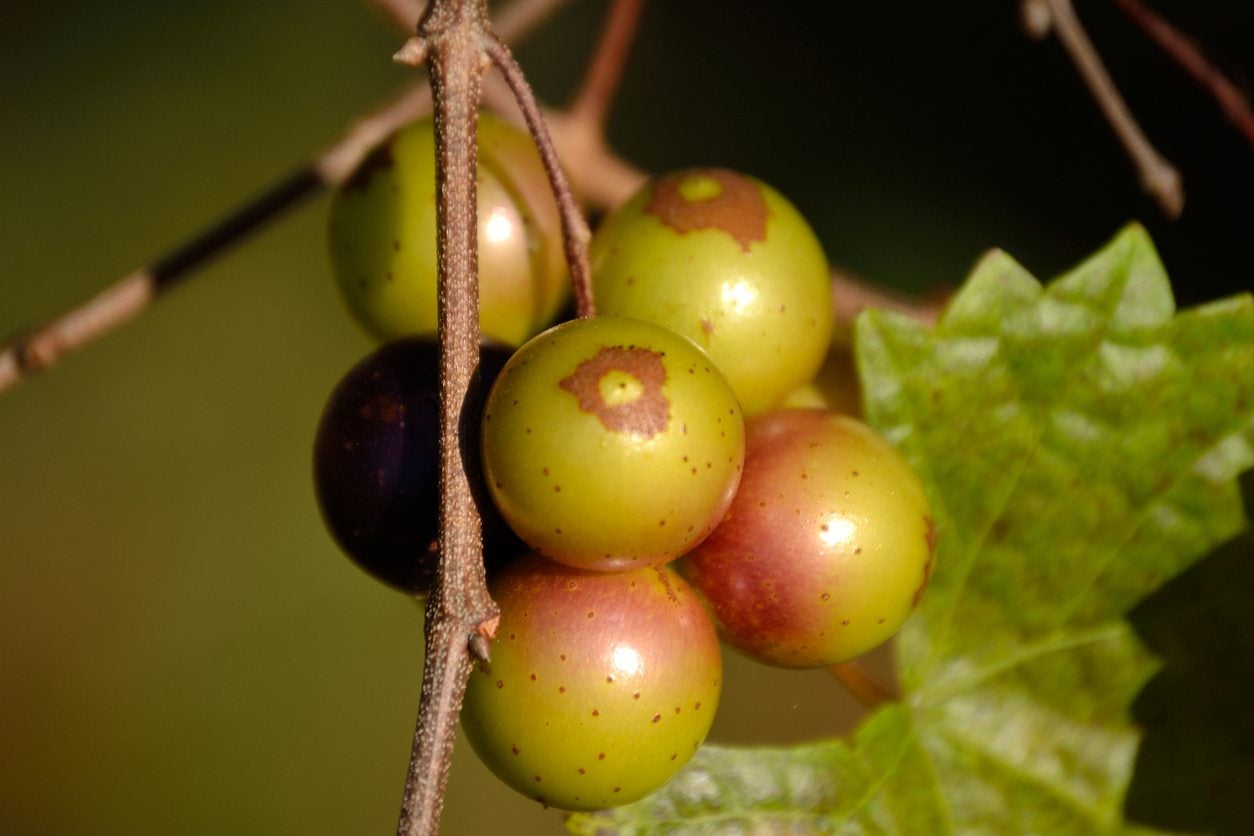Grapes That Have Thick Skin: Types Of Thick Skinned Grapes

“Oh, Beulah, peel me a grape.” So says Mae West’s character ‘Tira’ in the movie I’m No Angel. There are several interpretations of what that actually means, but suffice it to say that thick skinned grapes actually exist and very well might need to be peeled. Let’s learn more about thick grape skins.
Grapes with Thick Skin
Grapes that have thick skin were actually the norm at one time. It’s taken over 8,000 years of selective breeding to create the types of grapes we use today. Ancient grape eaters might very well have had someone, no doubt a slave or servant, peel the thick-skinned grapes and not only to remove the tough epidermis but also to remove the unpalatable seeds. There are many different varieties of grapes, some grown for specific purposes and some with crossover uses. Grapes grown for wine, for instance, have thicker skins than edible varieties do. Wine grapes are smaller, usually with seeds, and their thicker skins are a desirable trait for winemakers, as much of the fragrance is derived from the skin. Then we have muscadine grapes. Muscadine grapes are native to the southeastern and south-central United States. They have been cultivated since the 16th century and are well adapted to these warm and humid climates. They also need fewer chilling hours than other types of grapes. Muscadine grapes (berries) range in color and, as mentioned, have an incredibly tough skin. Eating them involves biting a hole in the skin and then sucking out the pulp. Like all grapes, muscadines are an excellent source of antioxidants and dietary fiber, much of it in the tough skin. So, while discarding the skin might be more palatable, eating some of it is incredibly healthful. They are also used to make wine, juice, and jelly. Large grapes, sometimes bigger than a quarter, muscadines grow in loose clusters rather than bunches. They are, therefore, harvested as individual berries rather than clipping whole bunches. When ripe, they exude a rich aroma and are easily slid from the stem. Seedless grapes are also more likely to have thick skin. Due to popular preference, seedless varieties were bred from cultivars such as Thompson Seedless and Black Monukka. Not all seedless grapes have thick skins but some, like ‘Neptune,’ do.
Gardening tips, videos, info and more delivered right to your inbox!
Sign up for the Gardening Know How newsletter today and receive a free copy of our e-book "How to Grow Delicious Tomatoes".

Amy Grant has been gardening for 30 years and writing for 15. A professional chef and caterer, Amy's area of expertise is culinary gardening.
-
 Moody Blooms For Spring: 8 Types Of Black Flowers To Add Drama To Spring Displays
Moody Blooms For Spring: 8 Types Of Black Flowers To Add Drama To Spring DisplaysFrom midnight burgundies to inky violets, several types of black flowers can enrich and embolden a spring display. Try these brooding bloomers for a moody garden
By Tonya Barnett
-
 Can Snake Plants Live Outside? Everything You Need To Know For Snake Plants Al Fresco
Can Snake Plants Live Outside? Everything You Need To Know For Snake Plants Al FrescoSnake plants can live outside given the right conditions, but be careful that they don't take over! Learn the best way to use snake plants in your landscape.
By Mary Ellen Ellis